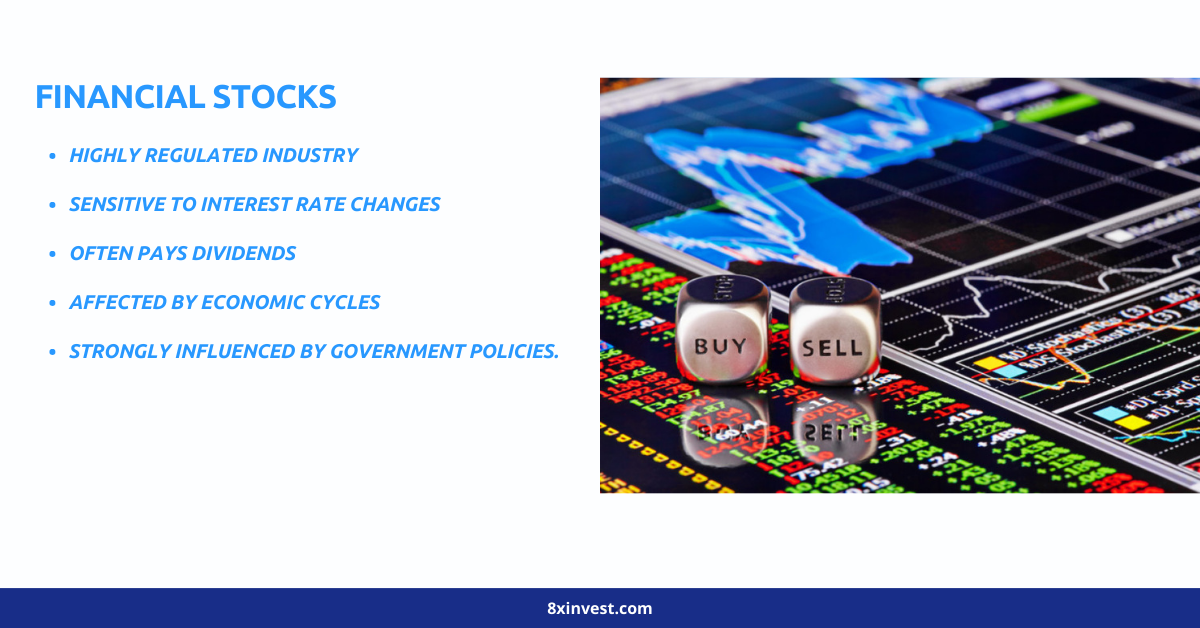
The term “financial system” is often associated with banks. While this sector includes the majority of the financial sector’s activity, it also includes a variety of other companies.
Top financial stocks that beginners should know about
These are some solid, well-established financial companies that are simple to understand.
Berkshire Hathaway is not always considered a financial sector stock (NYSE.BRK.A). (NYSE.BRK.B). However, it is an insurer at its core. Berkshire, headed by Warren Buffett (NYSE:BRK.A) is the parent of GEICO. It also has a vast reinsurance operations. Investors in the firm have exposure to its huge stock portfolio that includes large stakes of several U.S. banking institutions.
JPMorgan Chase (NYSE :JPM) is the U.S. largest bank and the biggest company in the financial sector. JPMorgan Chase can be a tough investment. JPMorgan Chase has vast operations in both retail and investment banking. They consistently post the highest profitability metrics within the industry.
Visa , NYSE:V, operates the world’s biggest payment network. This, along Mastercard NYSE:MA, gives Visa half of a duopoly on the payment processing market. Visa still has room for growth, but it’s not a mistake to think so. The company currently processes around $12 trillion in annualized monthly payments volume per annum, which is a relatively small share of the global cashless payments market that the company’s management values to be $185 trillion.
The Vanguard Financials Fund (NYSEMKT.VFH), is one of the most popular financial sector exchange-traded fund (ETFs). The fund gives portfolio exposure to the whole financial sector at a low 0.1% expense rate (an annual fee). The fund allows exposure to 377 different financial stocks, weighted based on their market capitalizations. (More funds are invested in the largest financial companies. Apart from the three mentioned companies, the top holdings include Bank of America NYSE:BAC, Citigroup NYSE:C), BlackRock NYSE:BLK, and Morgan Stanley NYSE:MS.
Types of financial stocks
There are many types of companies in the financial sector, beyond banks. Financial sector companies vary in function, size, growth potential, among other factors.
Financial stocks can be divided into multiple categories such as:
Stocks of banks: As we have already mentioned, bank stocks are the largest part of the financial industry. These include commercial banks, like Wells Fargo NYSE:WFC, which offer loans and deposit accounts to individuals, and investment banks, like Goldman Sachs NYSE:GS, which provide services for institutions and high-net worth investors. There are also universal banks, like JPMorgan Chase, that serve both commercial as institutional clients.
Insurers: Second largest sector in the financial sector is insurance. This includes specialty insurers, life- and health insurers, insurance brokers, and property and casualty and casualty. Berkshire Hathaway has the largest presence in the insurance subsector. This includes companies that are “insurtech”, like Lemonade (NYSE :LMND).
Financial Services: Many companies offer services that relate to investing and the public market, without being considered banks or insurers. Two examples of financial services providers are the S&P Global Ratings Agency (NYSE;SPGI) as well as the futures trading CME Group, (NYSE.CME).
Mortgage Real Estate Investment Trusts: Companies who own mortgages and financial real estate instruments are another group within the financial sector.
Fintech – Fintech are companies that use technology to develop new solutions in the financial industry. This category includes PayPal Holdings and block (NYSE.SQ), formerly known under the name Square.
Blockchain & Cryptocurrencies: Financial companies often use blockchain technology to create products and services and also conduct business related to cryptocurrency (CRYPTO :BTC).
SPACs Special purpose acquisition companies (or SPACs) are companies that have no business operations but exist to acquire another company. SPACs are also known as “blank checks” companies and are part the financial sector.
Analyzing financial sector investments
Investors have two options for evaluating financial industry investments: the standard metrics like the price-to earnings (P/E) ratio and those that are tailored to this sector. There are several important metrics investors need to be aware of for the subsectors that make up the financial industry.
These metrics are especially useful in analyzing bank stock:
Return On Equity (ROE), return on Assets (ROA), These metrics, which are used to determine bank profitability, are ROE (return on equity) and ROA (return on assets). They represent the company’s annualized profits as a percentage of shareholders’ equity or total assets. An industry standard is a 10% ROE and 11% ROA.
Net income margin (NIM), Most banks get their majority of their profit by simply lending money and charging interest to customers. The net interest margin is the difference between an average bank’s interest rate and the one it pays.
Efficiency rate: How much money a bank uses to generate revenue. A 60% efficiency ratio is an example of how much a bank invests to generate revenue. For example, $60 would be the cost to produce $100. Lower efficiency ratios are better.
Net cost-off (NCO), ratio This ratio can be used to compare asset quality among institutions. The NCO ratio represents the annualized percent of a bank’s loans that it writes off as bad credit.
P/B (Price-to-Book) ratio: In valuing bank shares, the price/book-value ratio is just as important as the ratio P/E. The P/B value is the stock price of a company divided by its net asset. The price-to-tangible-book-value (P/TBV) ratio may be even more useful than the P/B ratio because it excludes assets tough to value such as brand names and goodwill.
Two important metrics for the analysis of stocks with insurance are:
The combined ratio: First add (combine), the amount that an insurance company pays out as claims to the amount the company spends for other business expenses. Divide that amount by how much the insurance company gets as premium income, and check that the result is below 100%. A lower combined ratio signifies that the insurer is generating more profit.
Investment Margin: Underwriting policies are profitable for insurers. However, they also make money investing the premiums that they collect rather than just using the money to pay claims. Because investment income is often the only source of income for insurance companies, it is crucial to understand how profitably an insurer invests.
Invest in the Financial Sector for the Long-Term
Bank stocks were amongst the worst performers of the COVID-19 epidemic. Bank stocks, and especially banks, can be cyclical. They are therefore vulnerable to falling value during recessions. In times of high unemployment, both consumers and businesses struggle to pay their bills. This can lead to large amounts for banks in bad debt.
You must be aware of all the risks involved in investing. When analysing a company’s outlook, don’t just focus on one or two metrics. You should also remember that stocks in the financial sector are better suited for long-term investments.
Financial stock prices can be affected by many factors in the short term. Many of those factors, such as falling interest rates or weak economic conditions, have little to no effect on the business’s ability to perform. You should consider adding the best financial stocks to your portfolio if you have a 5-year investment horizon.

